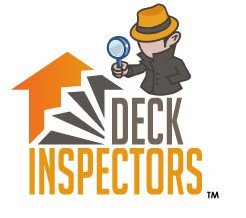Innovations in SB 326 Compliance: Tools and Technologies for Inspections

SB 326 in California has made regular inspections of exterior elevated elements a critical task for property owners. The deck inspection industry has embraced various innovative tools and technologies to meet these requirements efficiently and effectively. These advancements enhance the accuracy and thoroughness of inspections and streamline the compliance process. This ensures that property owners can maintain safe and secure environments for their residents. Here are some of the latest innovations in SB 326 compliance. Advanced Inspection Tools Drones and Aerial Imaging One of the most significant advancements in deck inspection technology is using drones. Drones with high-resolution cameras and sensors can quickly and safely inspect hard-to-reach areas of elevated structures. This technology allows inspectors to capture detailed images and videos, providing a comprehensive view of the deck’s condition without scaffolding or ladders. Drones can identify signs of wear and tear, water damage, and structural weaknesses, making the inspection process faster, safer, and more accurate. Thermal Imaging Cameras Thermal imaging cameras are another powerful tool in the arsenal of SB 326 inspectors. These cameras detect temperature variations, indicating moisture intrusion, wood rot, or other hidden structural issues. By using thermal imaging, inspectors can identify potential problems that may not be visible to the naked eye. Better visibility allows for early intervention and repair. This technology enhances the thoroughness of inspections and helps prevent small issues from becoming major hazards. Innovative Software Solutions SB 326 Inspection Management Software Specialized inspection management software has revolutionized how SB 326 inspections are conducted and documented. These software solutions allow inspectors to schedule, conduct, and report on inspections in a streamlined and organized manner. Features such as digital checklists, photo documentation, and automated reporting ensure that all aspects of the inspection are thoroughly documented and easily accessible. This improves efficiency and ensures that property owners have a clear record of compliance. 3D Modeling and Simulation Advanced 3D modeling and simulation software are also being utilized in deck inspections. These tools create detailed, interactive models of the deck and its components. This allows inspectors to visualize potential issues and simulate the impact of various factors, such as load stress and weather conditions. This level of detail provides valuable insights into structural integrity and helps inspectors make informed recommendations. The Future of SB 326 Compliance Integrating these advanced tools and technologies into SB 326 inspections marks a significant step forward in ensuring the safety and longevity of exterior elevated elements. As technology continues to evolve, we can expect even more innovative solutions to emerge, further enhancing the effectiveness and efficiency of inspections. Staying abreast of technological advancements is crucial for property owners. Partnering with an inspection company that utilizes the latest tools and software ensures that inspections meet the highest standards, providing peace of mind and safeguarding against potential liabilities. Embracing SB 326 Innovation for Enhanced Safety In conclusion, innovations in SB 326 compliance tools and technologies are transforming the deck inspection industry. These advancements, from drones and thermal imaging to advanced software solutions, make inspections more accurate, efficient, and comprehensive. Property owners can ensure that their elevated structures meet SB 326 requirements by embracing these innovations. Staying updated with the latest inspection technologies is not just about compliance. It’s about adopting a proactive approach to property maintenance that prioritizes safety and efficiency. As the industry continues to innovate, property owners who leverage these tools will be better able to maintain secure and compliant environments for their residents. Get in contact with a professional deck inspector today by clicking here! Deck Inspectors for Southern California is happy to offer our services in Los Angeles, Orange County as well as San Diego and all Southern California surrounding areas like: Glendale, Pasadena, Burbank, Santa Monica, Anaheim, Temecula, Vista, Escondido, Carlsbad, and El Cajon
Behind the Law: Understanding the Story and Impact of SB 721

In California, ensuring the safety of residential buildings is a top priority. The enactment of Senate Bill 721 marks a significant step toward enhancing the structural integrity of exterior elevated elements like decks and balconies. This article delves into the origins, key provisions, and impact of SB 721, highlighting why this law is crucial for property owners and residents alike. The Origin and Story of SB 721 Catalysts for Legislative Action The journey to SB 721 began with several tragic incidents involving the collapse of balconies and decks, leading to fatalities and serious injuries. One of the most notable events was the 2015 balcony collapse in Berkeley, California, which resulted in six deaths and seven injuries. Investigations revealed that the collapse was due to dry rot, a preventable condition, and regular inspections and maintenance had been conducted. This tragedy underscored the urgent need for a regulatory framework to prevent similar incidents in the future. Legislative Response In response to these events, California lawmakers introduced SB 721. The bill establishes mandatory inspection requirements for exterior elevated elements in multi-family residential buildings. It aims to enhance public safety by ensuring that critical structures like balconies and stairways undergo regular inspections for signs of deterioration and potential hazards. The legislation was signed into law in 2018, and specific guidelines were set for inspecting and maintaining these structures. Key Provisions and Impact of SB 721 Inspection Requirements SB 721 mandates that all exterior elevated elements more than six feet above ground level in buildings with three or more units undergo regular inspections. The initial inspection must be completed by January 1, 2025, and subsequent inspections are required every six years. Qualified professionals, including licensed architects, civil engineers, structural engineers, or certified contractors, must conduct these inspections. Inspection Criteria The inspections identify signs of water intrusion, dry rot, fungal decay, and structural weaknesses. Inspectors use a combination of visual assessments and, if necessary, more invasive methods to ensure thorough evaluations. Detailed reports are then generated, documenting the condition of the structures and any required repairs or maintenance. Safety and Compliance SB 721’s primary impact is the enhanced safety of multi-family residential buildings. By mandating regular inspections, the law ensures that potential hazards are identified and addressed before they lead to catastrophic failures. This proactive approach significantly reduces the risk of accidents, protecting the lives of residents and visitors. Financial and Operational Implications of SB 721 SB 721 introduces new responsibilities and potential costs for property owners. The initial and recurring inspections and any necessary repairs represent an investment. However, they are essential for maintaining the property’s value and safety. Additionally, non-compliance can result in legal penalties and increased liability in the event of an accident. Community Trust and Peace of Mind Beyond tangible safety benefits, SB 721 also fosters a sense of community security and trust. Residents can have peace of mind knowing that their homes are subject to rigorous safety standards and regular professional oversight. This trust is invaluable in building positive relationships between property owners, managers, and residents. SB 721 Conclusion SB 721 is more than just a regulatory requirement. It is a critical measure to safeguard the well-being of Californians living in multi-family residential buildings. Understanding the story behind the law and its provisions highlights its importance and positive impact on community safety. As a deck inspection company in Southern California, we are committed to helping property owners comply with SB 721 and ensuring their properties’ structural integrity and safety. Embracing the principles of SB 721 protects lives and enhances the quality and reliability of residential buildings across the state. Looking for Deck Inspection services in Southern California? Contact Deck Inspectors of Southern California by clicking here! Deck Inspectors for Southern California is happy to offer our services in Los Angeles, Orange County as well as San Diego and all Southern California surrounding areas like: Glendale, Pasadena, Burbank, Santa Monica, Anaheim, Temecula, Vista, Escondido, Carlsbad, and El Cajon
How to Find Qualified Deck Inspectors
Ensuring your deck’s safety and structural integrity is essential for the well-being of your property and the safety of its occupants. Whether you’re a homeowner or a property manager, hiring a qualified deck inspector is crucial for conducting thorough inspections and identifying potential hazards. This guide will explore finding qualified deck inspectors in Southern California. Researching Credentials and Qualifications Licensing and Certification: One of the first things to look for when hiring a deck inspector is their licensing and certification. In California, deck inspectors are typically required to hold a valid license as a structural engineer, civil engineer, architect, or general contractor. Additionally, certifications from reputable organizations such as the International Code Council (ICC) demonstrate that the inspector has undergone specialized training and meets industry standards. Experience and Expertise: Experience is another critical factor when evaluating deck inspectors. Look for inspectors with a proven track record of conducting deck inspections and experience working with various types of decking materials and structural designs. An inspector with extensive experience is more likely to identify potential issues and provide practical recommendations for repairs or maintenance. Seeking Deck Inspectors Recommendations and Reviews Word of Mouth: Seeking recommendations from friends, family, neighbors, or colleagues who have recently had their decks inspected can be a valuable source of information. Ask about their experiences with the inspector, the inspection’s thoroughness, and the inspection report’s clarity. Personal recommendations can help you narrow down your options and find reputable deck inspectors in your area. Online Reviews and Testimonials: Besides personal recommendations, online reviews and testimonials can provide insight into the quality of service offered by deck inspectors. Websites like Yelp, Google My Business, and Angie’s List allow homeowners and property managers to share their experiences and ratings of local inspectors. Pay attention to the overall ratings and any specific feedback related to professionalism, communication, and the accuracy of the inspection findings. Evaluating Communication and Customer Service Accessibility and Responsiveness: When contacting potential deck inspectors, consider their accessibility and responsiveness. A qualified inspector should be readily available to answer your questions, provide information about their services, and schedule an inspection at your convenience. Prompt communication and clear explanations demonstrate professionalism and a commitment to customer service. Transparency and Clarity: During the initial consultation or inspection, observe how the inspector communicates and explains their findings. A qualified inspector should be transparent about their process, methodology, and any potential issues identified during the inspection. They should also provide a detailed inspection report outlining their observations, recommendations, and necessary repairs or maintenance. Deck Inspectors Conclusion Finding qualified deck inspectors in Southern California requires thorough research, careful evaluation, and consideration of credentials, experience, and customer feedback. By researching credentials and qualifications, seeking recommendations and reviews, and evaluating communication and customer service, you can ensure that you hire a qualified inspector who will conduct a thorough inspection and provide reliable recommendations for maintaining the safety and structural integrity of your deck. Investing in a qualified deck inspector is an essential step in protecting your property and ensuring the safety of its occupants for years to come. Looking for Deck Inspection services in Southern California? Contact Deck Inspectors of Southern California by clicking here! Deck Inspectors for Southern California is happy to offer our services in Los Angeles, Orange County as well as San Diego and all Southern California surrounding areas like: Glendale, Pasadena, Burbank, Santa Monica, Anaheim, Temecula, Vista, Escondido, Carlsbad, and El Cajon
Empowering Homeowners: Understanding Your Rights and Responsibilities under SB 326
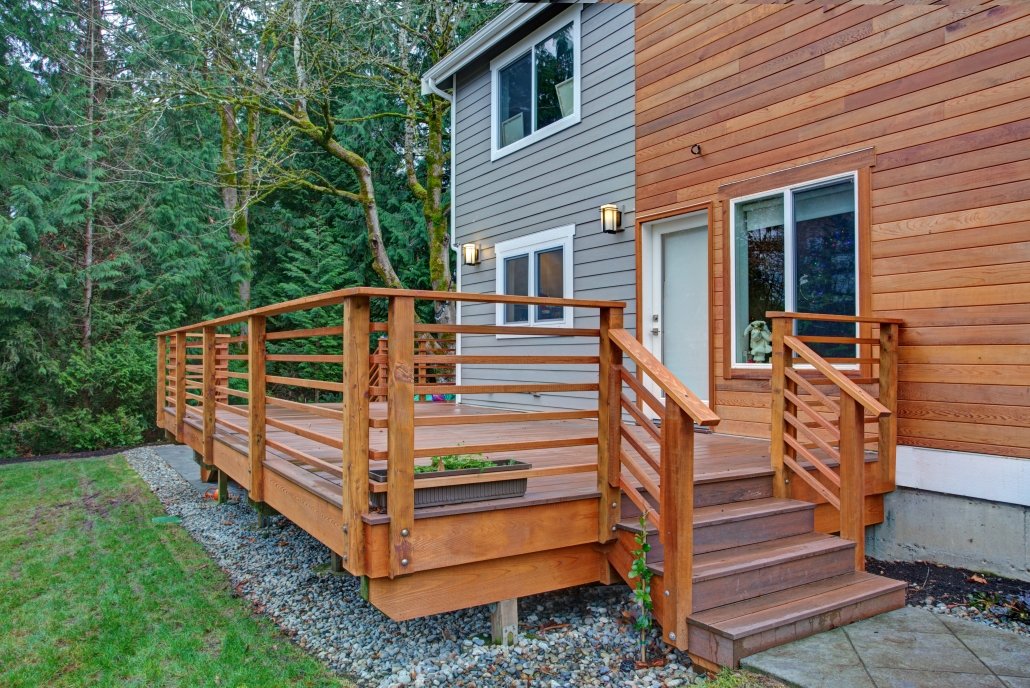
As a homeowner in Southern California, ensuring the safety and longevity of your property is paramount. With Senate Bill 326, new regulations enhance the structural integrity of multi-family residential buildings, particularly concerning exterior elevated elements like decks and balconies. Understanding your rights and responsibilities under SB 326 is crucial for maintaining the safety and value of your home. Here’s a comprehensive guide to help you navigate this important legislation. Your Rights under SB 326 Right to Safety and Compliance SB 326 mandates regular inspections of exterior elevated elements (EEEs) such as balconies, decks, and stairways six feet or more above the ground. These inspections identify and address potential safety hazards, ensuring your living environment remains secure. As a homeowner, you have the right to a safe home that complies with these updated safety standards. Right to Qualified Inspections Under SB 326, a licensed architect or structural engineer must conduct the inspection. This provision ensures that only qualified professionals assess the structural integrity of your building’s EEEs. Homeowners have the right to expect thorough, expert evaluations performed by certified and experienced individuals in structural safety. Access to Inspection Reports After an SB 326 inspection, a detailed report documents the condition of the inspected elements and any necessary repairs or maintenance. Homeowners have the right to access these reports, which provide transparency and peace of mind about the state of their property. This transparency lets you make informed decisions about necessary repairs and ongoing maintenance. Your Responsibilities under SB 326 Ensure Timely Inspections SB 326 requires that the initial inspection of EEEs be completed by January 1, 2025, with subsequent inspections every nine years. As a homeowner, you must schedule and complete them on time. This proactive approach helps prevent potential hazards and ensures ongoing compliance with the law. Addressing Identified Issues If an inspection report identifies any issues or necessary repairs, homeowners are responsible for addressing these concerns promptly. Neglecting to address identified problems can lead to further deterioration and potential safety risks. Making repairs promptly complies with the bill and protects the value and safety of your home. Collaborate with Homeowners Associations (HOAs) Working with your Homeowner’s Association (HOA) is essential to complying with SB 326 in multi-family residential buildings. HOAs typically coordinate the inspections and subsequent repairs for shared structures like balconies and decks. Homeowners must stay informed about the HOA’s plans and cooperate in the inspection and repair process to ensure compliance and safety. Financial Responsibilities of SB 326 While HOAs usually manage the logistics of inspections and repairs, homeowners may be responsible for covering the costs associated with these processes. Understanding your financial responsibilities and planning for potential expenses related to SB 326 compliance is crucial. Staying informed about your HOA’s budgeting and reserve funds can also provide insights into how these costs will be managed. SB 326 Conclusion Understanding your rights and responsibilities empowers you to take proactive steps in maintaining the safety and integrity of your home. By ensuring timely inspections, addressing identified issues, and collaborating with your HOA, you can uphold the standards of SB 326. As a deck inspection company in Southern California, we are committed to helping homeowners navigate SB 326, providing expert inspections and support to ensure compliance and peace of mind. Embrace your role in safeguarding your property and enhancing the safety of your living environment for years to come. So, are you looking for Deck Inspection services in Southern California? Contact Deck Inspectors of Southern California by clicking here! Deck Inspectors for Southern California is happy to offer our services in Los Angeles, Orange County as well as San Diego and all Southern California surrounding areas like: Glendale, Pasadena, Burbank, Santa Monica, Anaheim, Temecula, Vista, Escondido, Carlsbad, and El Cajon
Maintaining Your Apartment Deck for Longevity
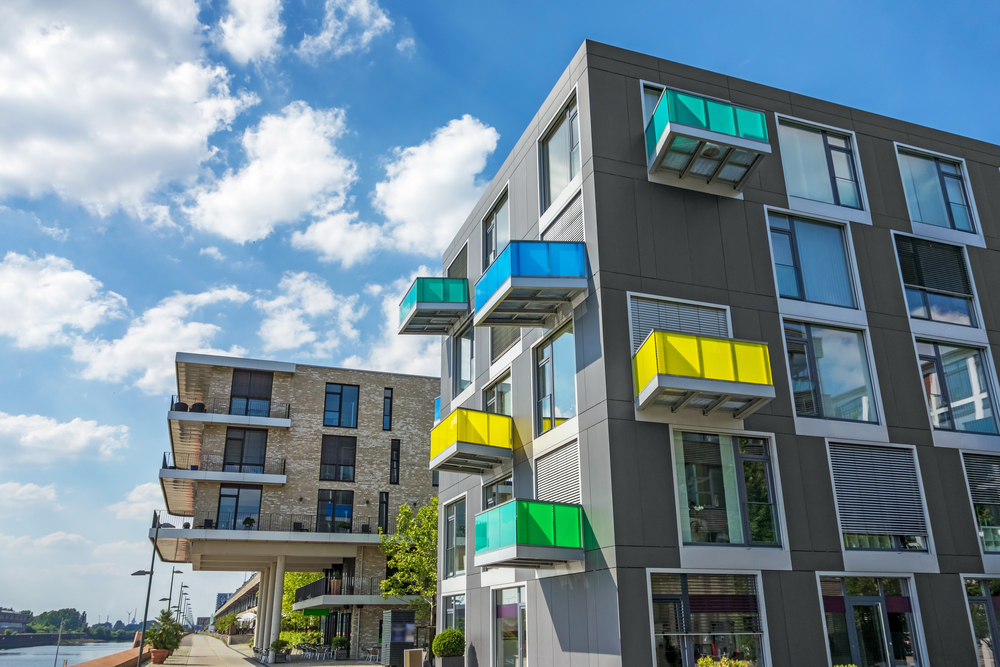
Apartment decks in Southern California serve as valuable outdoor living spaces, offering residents a place to relax, entertain, and enjoy the beautiful weather. However, regular maintenance is essential to ensure these decks remain safe, functional, and attractive for years. In this guide, we’ll explore some basic maintenance tasks that residents can perform to extend the life of their apartment deck. Regular Apartment Deck Cleaning and Inspecting Regular Cleaning Routine: Keeping your apartment deck clean is crucial for preventing dirt buildup, mold growth, and damage to the surface materials. Sweep the deck regularly to remove leaves, debris, and dirt. Use a mild detergent and water solution to scrub the surface and remove stains or spills. Rinse thoroughly with clean water afterward. Inspecting for Damage: Regular inspections allow you to identify any signs of wear and tear early on, preventing minor issues from escalating into costly repairs. Check for loose or damaged boards, rusting nails or screws, and signs of water damage such as rot or mold. Pay close attention to areas where the deck meets the building structure, as these areas are prone to water infiltration. Sealing and Protecting Applying Sealant: Sealing your apartment deck provides additional protection against moisture, UV damage, and wear. Choose a high-quality sealant specifically formulated for outdoor wood surfaces or composite decking material. Apply the sealant according to the manufacturer’s instructions, ensuring complete coverage of the entire surface. Reapply sealant as needed, typically every 1-3 years, depending on weather conditions and foot traffic. Protecting Against Moisture: Moisture is one of the biggest threats to the longevity of your apartment deck. To prevent water pooling on the deck surface, ensure proper drainage by clearing debris from gutters and downspouts. Consider installing gutters or a drainage system beneath the deck to redirect water from the structure. Use waterproofing products on exposed surfaces, such as the underside of the deck boards, to further protect against moisture infiltration. Repairing and Refinishing Addressing Apartment Deck Damage Promptly: If you notice any signs of damage during your inspections, address them promptly to prevent further deterioration. Replace loose or damaged boards, tighten loose screws or nails, and repair any cracks or splits in the surface. Sand down rough spots and apply a fresh coat of stain or paint to protect the wood and enhance its appearance. Refinishing for Longevity: Periodically refinishing your apartment deck can help restore its appearance and extend its lifespan. Sanding the surface removes the old finish and prepares the wood for a new coat of stain or paint. Choose a finish that offers UV protection and waterproofing properties to shield the wood from the elements. Refinishing every 3-5 years can help maintain the integrity and beauty of your apartment deck. Apartment Deck Maintenance Conclusion Maintaining your apartment deck is essential for preserving its structural integrity and aesthetic appeal. By incorporating regular cleaning, inspections, sealing, and repair into your maintenance routine, you can ensure that your deck remains a safe and enjoyable outdoor space for years. Taking proactive steps to protect and care for your apartment deck enhances its longevity, adds value to your property, and enhances your overall living experience in Southern California. Looking for Deck Inspection services in Southern California? Contact Deck Inspectors of Southern California by clicking here! Deck Inspectors for Southern California is happy to offer our services in Los Angeles, Orange County as well as San Diego and all Southern California surrounding areas like: Glendale, Pasadena, Burbank, Santa Monica, Anaheim, Temecula, Vista, Escondido, Carlsbad, and El Cajon
Ensuring Safety: A Comprehensive Guide to SB 721 Inspections

In California, the safety and structural integrity of exterior elevated elements (EEEs) such as balconies, decks, and stairways in multi-family residential buildings are paramount. Senate Bill 721, enacted in 2018, mandates regular inspections to ensure these structures remain safe and reliable. As a deck inspection company in Southern California, we aim to provide a comprehensive guide to SB 721 inspections, highlighting the essential aspects and what property owners need to know. Understanding SB 721 Inspections What is SB 721? SB 721, also known as the “Balcony Inspection Bill,” requires periodic inspections of balconies, decks, stairways, and other EEEs more than six feet above ground level and serving three or more dwelling units. This legislation was introduced in response to several tragic incidents caused by structural failures, emphasizing the need for routine safety checks and maintenance. Inspection Requirements Under SB 721, the first inspection must be completed by January 1, 2025, and every six years thereafter. These inspections must be conducted by a qualified professional, such as a licensed architect, civil engineer, structural engineer, or a contractor holding a specified license. The goal is to identify any hazards or potential failures due to dry rot, water damage, fungal decay, or other structural weaknesses. The SB 721 Inspection Process Pre-Inspection Preparation Property owners should ensure that all relevant areas are accessible before an SB 721 inspection. Clear any obstructions from decks, balconies, and stairways to allow the inspector a thorough view of the structural components. Having previous maintenance records and any past inspection reports on hand can also benefit the inspector. During SB 721 Inspections During an SB 721 inspection, the inspector will examine all accessible EEEs, focusing on signs of wear and tear, water damage, dry rot, and other potential structural issues. They may use various tools and techniques, such as moisture meters, to assess the condition of the materials. In some cases, destructive testing may be necessary to inspect hidden areas, though this will be conducted carefully to minimize damage. Post-Inspection Reporting After the inspection, a detailed report will be generated. This report will include the condition of all inspected elements, any identified issues, and recommendations for repairs or maintenance. The inspector will classify the findings based on severity, guiding property owners on the urgency of necessary actions. Addressing Inspection Findings Immediate Repairs Prompt action is required if the inspection report identifies any immediate hazards or significant structural issues. Property owners must arrange for repairs by licensed professionals to address these critical concerns. Timely repairs comply with SB 721 and prevent further deterioration and potential safety risks. Ongoing Maintenance Regular maintenance is crucial to extending the life of EEEs and ensuring ongoing safety. Property owners should follow the inspector’s recommendations for preventive measures and routine upkeep. This might include sealing surfaces, repairing minor damage, and ensuring proper drainage to prevent water accumulation. Documentation and Compliance Maintaining thorough documentation is essential for compliance with SB 721. Keep records of all inspections, reports, and repairs. These documents may be required for future inspections and can serve as proof of compliance with the law. Proper documentation also aids in tracking the condition and maintenance history of the property’s EEEs. Conclusion SB 721 inspections are critical to maintaining the safety and structural integrity of multi-family residential buildings in California. As a deck inspection company in Southern California, we are dedicated to helping property owners navigate the requirements of SB 721. By understanding the inspection process, addressing identified issues promptly, and maintaining thorough records, property owners can ensure compliance with the law and, more importantly, protect the safety and well-being of their residents. Embrace proactive inspection and maintenance practices to uphold the highest safety standards for your property. Looking for Deck Inspection services in Southern California? Contact Deck Inspectors of Southern California by clicking here! Deck Inspectors for Southern California is happy to offer our services in Los Angeles, Orange County as well as San Diego and all Southern California surrounding areas like: Glendale, Pasadena, Burbank, Santa Monica, Anaheim, Temecula, Vista, Escondido, Carlsbad, and El Cajon
Building Trust: The Role of Certifications and Accreditation in SB 326 Inspections
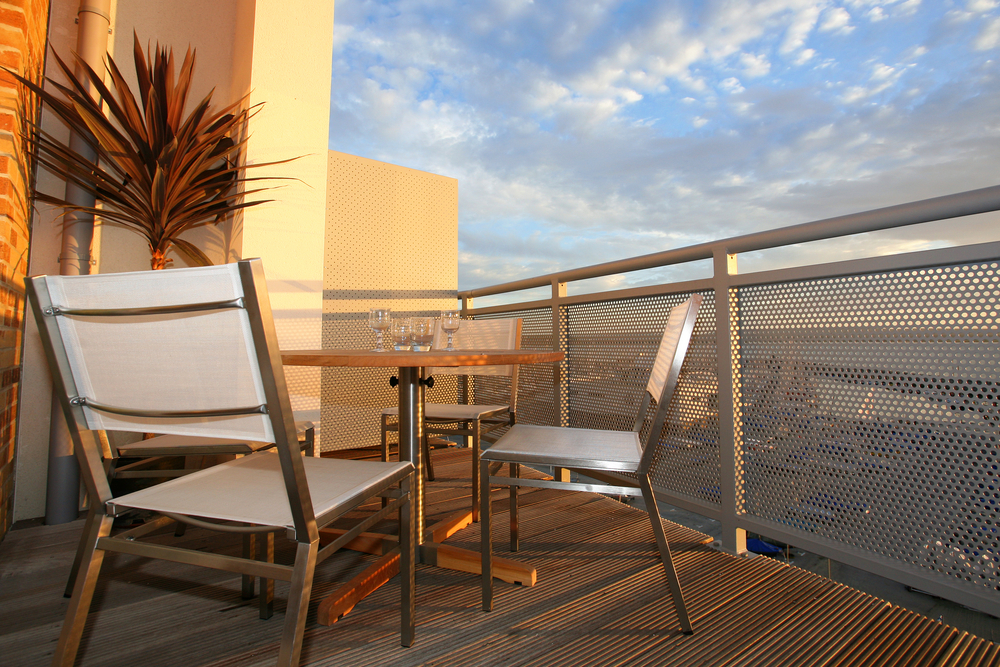
In the bustling landscape of Southern California, ensuring the safety and longevity of multi-family residential buildings is paramount. With the implementation of Senate Bill 326, mandatory inspections of exterior elevated elements, such as decks and balconies, have become a critical aspect of property management. You can’t overstate the role of certifications and accreditation for an SB 326 inspection. They are essential in building trust with property owners, ensuring compliance, and maintaining the highest safety standards. Understanding SB 326 Inspections SB 326, enacted in 2019, mandates that all California condominium associations inspect exterior elevated elements (EEEs) six feet or more above ground level. This law aims to prevent tragedies from structural failures of decks, balconies, and walkways by requiring regular, professional inspections. Key Requirements of SB 326: A licensed architect or structural engineer must complete the inspection. Initial inspections must be completed by January 1, 2025, with subsequent inspections every nine years. Lastly, inspection reports must be documented, and any identified issues must be promptly addressed. Given these stringent requirements, the role of a certified and accredited SB 326 inspection professional becomes vital. The Importance of Certifications and Accreditation Establishing Competency and Expertise: Certifications and accreditations testify to an inspector’s qualifications, expertise, and adherence to industry standards. For SB 326 inspections, employing a certified professional ensures that the inspector has undergone rigorous training and possesses the knowledge to identify potential structural issues accurately. Therefore, this fulfills legal requirements and provides property owners and residents peace of mind. Maintaining High Standards of Practice: Accredited inspectors are bound by a code of ethics and standards of practice set forth by their certifying organizations. This ensures that inspections are carried out with integrity, professionalism, and attention to detail. For instance, organizations such as the American Society of Home Inspectors (ASHI) or the International Code Council (ICC) provide certifications that uphold stringent standards. By adhering to these standards, certified inspectors help maintain the safety and integrity of residential buildings. Building Trust with Property Owners: Trust is a crucial factor in the relationship between inspectors and property owners. Certifications and accreditations serve as a mark of credibility and reliability. When property owners know that an inspector is certified by a reputable organization, they can be confident that the inspection will be thorough and compliant with SB 326 regulations. This trust is essential in facilitating cooperation, ensuring timely inspections, and addressing necessary repairs. Accreditation as a Differentiator in the Market In a competitive market, certification and accreditation can set a deck inspection company apart from its peers. Here’s how: Enhanced Credibility: A company that employs certified inspectors is committed to excellence and compliance with SB 326. This can be a significant differentiator when property owners select an inspection service. Access to Continuing Education: Accredited inspectors often have access to ongoing training and professional development. This ensures they stay updated with the latest industry trends, technologies, and regulatory changes, providing their clients the highest level of service. Increased Client Confidence: Property owners are more likely to trust and engage with a company that prominently showcases its credentials. This confidence can lead to repeat business, referrals, and a strong reputation in the market. Conclusion The role of certifications and accreditation in SB 326 inspections is pivotal. They establish the competency and reliability of inspectors, ensure adherence to high standards of practice, and build trust with property owners. As a deck inspection company in Southern California, prioritizing certifications and accreditations ensures compliance with SB 326 and differentiates your services in a competitive market. By fostering trust and maintaining the highest standards, you can help safeguard residential buildings and contribute to the community’s well-being. So, are you looking for Deck Inspection services in Southern California? Contact Deck Inspectors of Southern California by clicking here! Deck Inspectors for Southern California is happy to offer our services in Los Angeles, Orange County as well as San Diego and all Southern California surrounding areas like: Glendale, Pasadena, Burbank, Santa Monica, Anaheim, Temecula, Vista, Escondido, Carlsbad, and El Cajon
How Often Should I Get an SB 721 Inspection for My Deck?
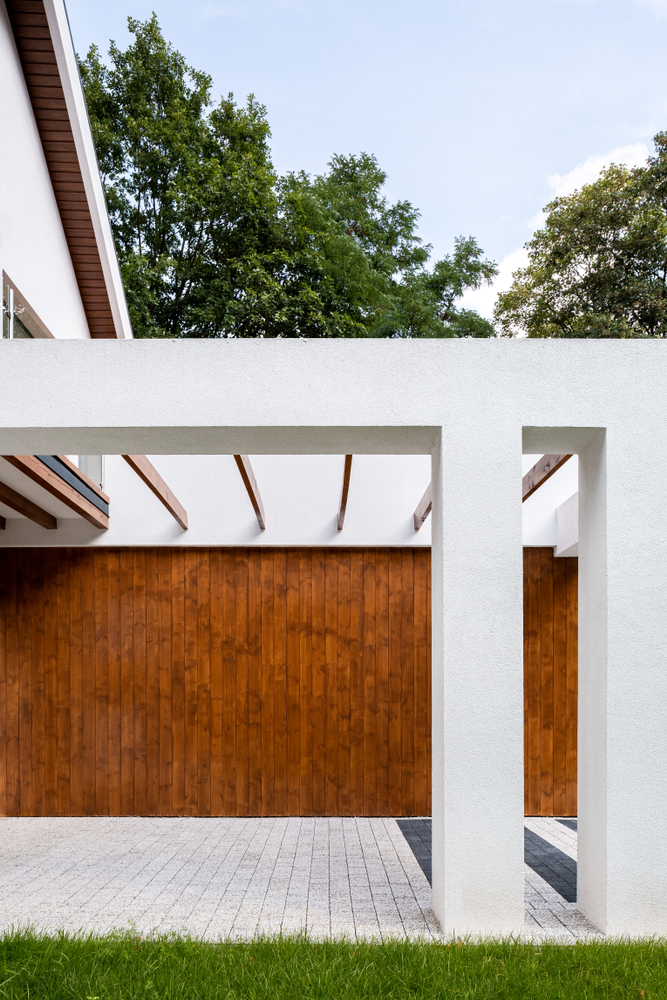
In Southern California, where regulations prioritize safety and structural integrity, property owners with decks in multi-family residential buildings must adhere to SB 721 requirements. This legislation mandates regular balconies and elevated structure inspections to mitigate safety risks and ensure compliance. However, determining the frequency of SB 721 inspections for decks can be crucial. This article guides how often property owners should schedule an SB 721 inspection for their decks to maintain safety and compliance. Understanding SB 721 Inspection Requirements SB 721 inspections are essential for identifying potential safety hazards and ensuring the structural integrity of decks in multi-family residential buildings. Understanding the specific requirements can help property owners determine the appropriate frequency for their deck inspections. Initial Inspection Upon Installation or Renovation Property owners should schedule an SB 721 inspection for their deck upon installation or renovation. This initial inspection ensures the deck meets safety standards and complies with building codes. Property owners can address any potential safety concerns and ensure compliance from the outset by conducting a thorough inspection at this stage. During the initial SB 721 inspection, inspectors will assess the deck’s structural integrity, including the materials used, fasteners, connections, and overall stability. Any deficiencies or areas of concern will be identified, allowing property owners to take corrective action before potential safety risks arise. Regular Scheduled Inspections In addition to the initial inspection, property owners should establish a schedule for regular SB 721 inspections of their decks. The frequency of these inspections may vary depending on factors such as the deck’s age, environmental conditions, and usage patterns. Property owners should consider scheduling SB 721 inspections for their decks at least once every two to three years as a general guideline. This interval allows inspectors to assess the deck’s condition, identify any deterioration or structural issues, and recommend necessary repairs or maintenance measures. Determining Frequency Based on Deck Usage and Environmental Factors: Factors such as usage patterns and environmental conditions may also influence the frequency of SB 721 inspections for decks. SB 721 Inspection Wrap-Up Ensuring decks’ safety and structural integrity in multi-family residential buildings is paramount for property owners in Southern California. By adhering to SB 721 inspection requirements and establishing a regular inspection schedule, property owners can mitigate safety risks, maintain compliance, and protect the value of their investment. Consulting with experienced inspection professionals can provide valuable guidance on determining the appropriate frequency of SB 721 inspections for decks based on individual circumstances and specific requirements. Get in contact with Deck Inspectors of Southern California by clicking here! Deck Inspectors for Southern California is happy to offer our services in Los Angeles, Orange County as well as San Diego and all Southern California surrounding areas like: Glendale, Pasadena, Burbank, Santa Monica, Anaheim, Temecula, Vista, Escondido, Carlsbad, and El Cajon
Cantilever Deck Decor Ideas for Summer from Deck Inspectors of Southern California
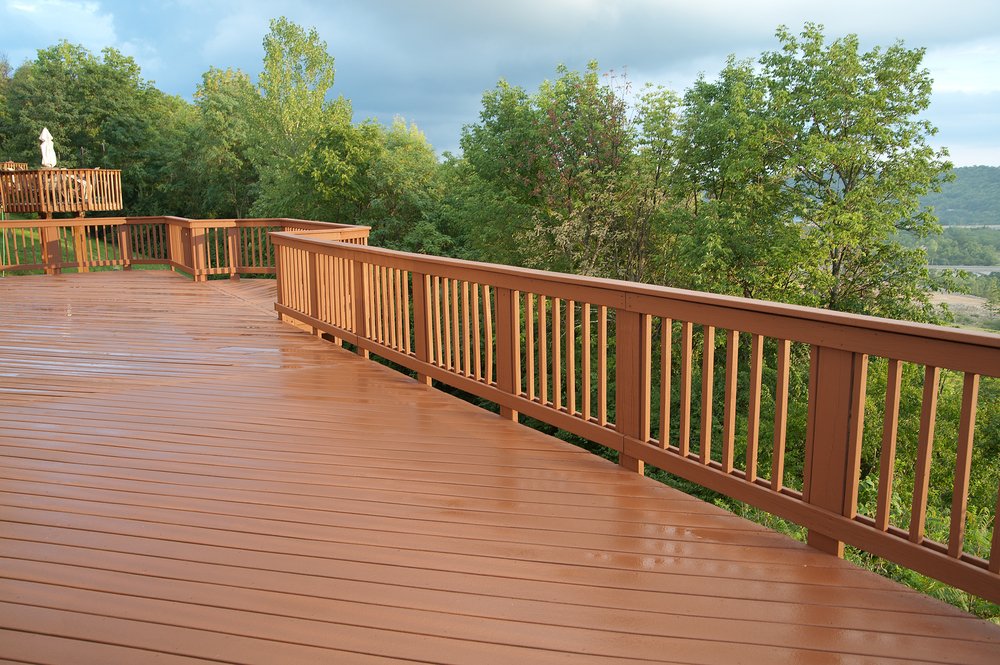
Cantilever decks offer a unique architectural feature that extends outdoor living spaces beyond the confines of traditional deck structures. With their floating appearance and unobstructed views, cantilever decks present exciting creative decor and design opportunities. As summer approaches, property owners with cantilever decks can embrace the season with stylish and functional decor ideas. This article explores innovative decor ideas for cantilever decks, allowing homeowners to maximize their elevated outdoor areas during summer. Elevating Outdoor Entertaining with Cantilever Deck Furniture Cantilever decks provide the perfect backdrop for outdoor entertaining, offering panoramic views and ample space for social gatherings. Choosing the right furniture and decor elements can enhance the functionality and aesthetics of cantilever decks for summer gatherings. Sleek and Space-Saving Furniture When furnishing a cantilever deck, opt for sleek and space-saving furniture pieces that complement the structure’s modern aesthetic. Choose lightweight and durable materials such as aluminum or synthetic wicker that can withstand exposure while providing comfort for guests. Consider multipurpose furniture items like modular sectional sofas with built-in storage or nesting tables that can be easily rearranged. Incorporating flexible seating options allows for seamless transitions between intimate conversations and larger gatherings. This maximizes the usability of the cantilever deck during summer festivities. Bright and Vibrant Accessories Infuse personality and charm into cantilever deck decor with bright and vibrant accessories that evoke the spirit of summer. Incorporate colorful throw pillows, outdoor rugs, and decorative cushions in bold patterns and tropical motifs to create a lively and inviting atmosphere. Hanging string lights or lanterns along the edges of the cantilever deck adds a warm and festive ambiance for evening gatherings, while potted plants and succulents bring a touch of greenery to the space. Embrace coastal-inspired accents like seashell decor, nautical rope accents, and driftwood sculptures to enhance the summer vibe and create a relaxing coastal retreat on the cantilever deck. Elevating Comfort and Relaxation with Cantilever Deck Shade Solutions As summer temperatures rise, providing shade becomes essential for ensuring comfort and enjoyment on cantilever decks. Explore innovative shade solutions to create cool and inviting outdoor spaces for relaxation and leisure. Retractable Shade Sail Systems Install retractable shade sail systems over cantilever decks to provide customizable shade coverage that adapts to changing sun angles. These sleek and modern solutions offer versatility and functionality, allowing property owners to control the shade and sunlight on their decks. Choose shade sail fabrics in light, breathable materials that provide UV protection while allowing airflow to keep the space cool and comfortable. Opt for vibrant colors or neutral tones that complement the deck’s design aesthetic and enhance the summer vibe. Pergolas with Adjustable Louvered Roof Systems On cantilever decks, incorporate pergolas with adjustable louvered roof systems to create a sophisticated, luxurious outdoor retreat. These innovative shade structures feature motorized louvers that can be tilted to control the amount of sunlight and shade. They provide optimal comfort and protection from the elements. Customize the pergola design with integrated LED lighting, ceiling fans, and retractable screens to enhance functionality and create a resort-like ambiance on the cantilever deck. Choose durable and weather-resistant materials like aluminum or composite wood for long-lasting performance and minimal maintenance, ensuring years of enjoyment in the summer sun. Cantilever Deck Wrap-Up Cantilever decks offer a modern, stylish outdoor living space perfect for summer entertaining and relaxation in Southern California. Property owners can elevate the functionality and aesthetics of their cantilever decks for the summer by incorporating sleek furniture, vibrant accessories, and innovative shade solutions. Whether hosting lively gatherings or enjoying quiet moments of relaxation, embracing creative decor ideas allows homeowners to make the most of their elevated outdoor oasis during summer’s long, sunny days. Get in contact with Deck Inspectors of Southern California by clicking here! Deck Inspectors for Southern California is happy to offer our services in Los Angeles, Orange County as well as San Diego and all Southern California surrounding areas like: Glendale, Pasadena, Burbank, Santa Monica, Anaheim, Temecula, Vista, Escondido, Carlsbad, and El Cajon
Going Green and Safe: Incorporating Sustainable Practices into SB 326 Inspections
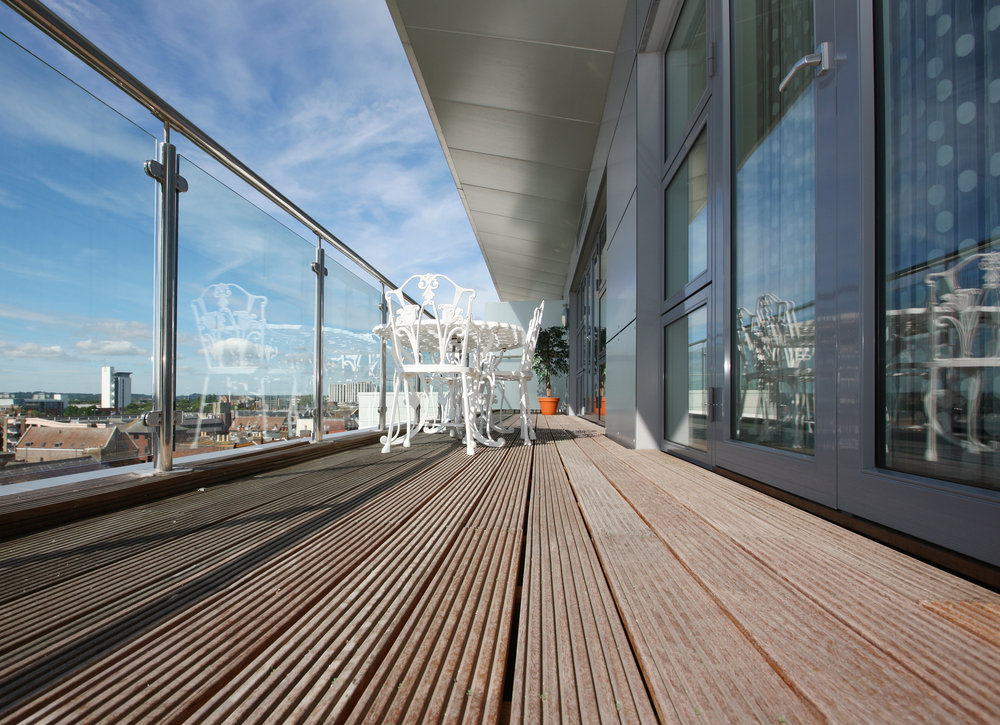
In Southern California, where environmental consciousness is high and safety regulations are stringent, property owners and inspection companies face the dual challenge of ensuring structural safety while minimizing environmental impact. SB 326 mandates regular inspections of deck structures in multi-family residential buildings, presenting an opportunity to merge safety requirements with eco-friendly initiatives. This article delves into the significance of integrating sustainable practices into SB 326 inspections, emphasizing the benefits for both the environment and property owners. Ensuring Structural Integrity with Sustainability in Mind SB 326 inspections are primarily geared toward ensuring the safety and structural integrity of elevated structures like balconies and decks. However, there’s an opportunity to enhance these inspections by incorporating sustainable practices that promote safety and reduce environmental impact. Choosing Sustainable Materials for Structural Reinforcement During SB 326 inspections, one crucial aspect is the materials used to construct or renovate deck structures. Opting for sustainable materials such as responsibly sourced timber, recycled wood, or composite decking made from recycled plastics can significantly contribute to the longevity and durability of the decks. Inspectors can evaluate the use of these eco-friendly materials to ensure they meet safety standards while minimizing environmental harm. Property owners can comply with SB 326 requirements by emphasizing sustainable materials, contributing to conservation efforts, and reducing their carbon footprint. Sustainable materials offer the dual benefit of enhancing structural integrity and promoting environmental stewardship. Implementing Energy-Efficient Solutions for Deck Lighting Lighting enhances safety and usability, especially during evening hours. However, traditional lighting solutions can be energy-intensive and contribute to environmental degradation. SB 326 inspections provide an opportunity to evaluate and recommend energy-efficient lighting options for deck structures. Inspectors can assess the efficiency of lighting systems and suggest alternatives such as LED fixtures or solar-powered lighting. LED lighting consumes less energy and has a longer lifespan than traditional incandescent bulbs, reducing energy consumption and maintenance costs. Solar-powered lighting solutions reduce reliance on the grid and harness renewable energy sources, aligning with sustainability goals while ensuring safety compliance. Promoting Environmental Responsibility and Safety Compliance Integrating sustainable practices into SB 326 inspections enhances safety compliance and promotes environmental responsibility and resilience in Southern California’s property management landscape. Incorporating sustainable practices into SB 326 inspections is essential for balancing safety, structural integrity, and environmental stewardship in Southern California’s property management sector. Property owners can mitigate safety risks by prioritizing eco-friendly materials and energy-efficient designs while reducing their carbon footprint. As regulations evolve and environmental concerns continue to grow, embracing sustainability in inspection processes will become increasingly crucial, paving the way for safer, greener communities across Southern California. Get in contact with Deck Inspectors of Southern California by clicking here! Deck Inspectors for Southern California is happy to offer our services in Los Angeles, Orange County as well as San Diego and all Southern California surrounding areas like: Glendale, Pasadena, Burbank, Santa Monica, Anaheim, Temecula, Vista, Escondido, Carlsbad, and El Cajon
